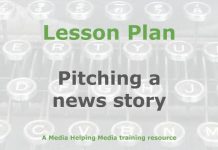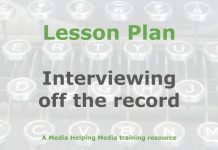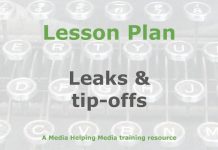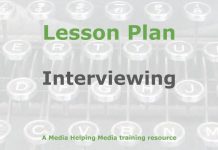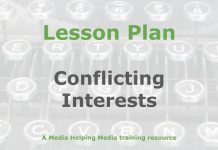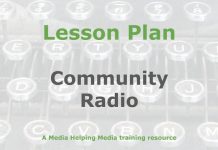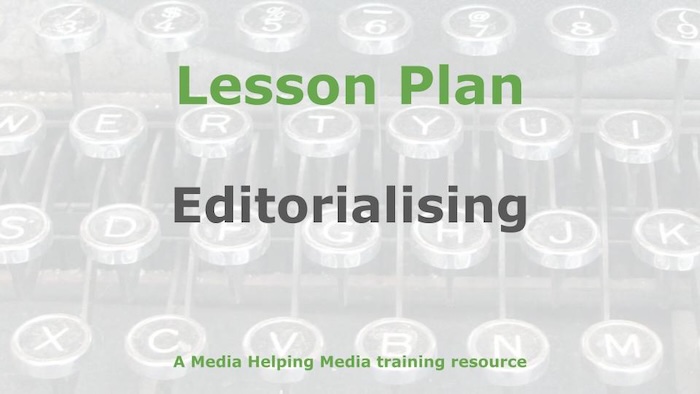 This lesson plan teaches students the importance of avoiding all forms of editorialising when producing news journalism. It’s based on the article ‘Editorialising is not for news‘ which is published on Media Helping Media. We recommend you read the article before adapting this lesson plan for your own purposes.
This lesson plan teaches students the importance of avoiding all forms of editorialising when producing news journalism. It’s based on the article ‘Editorialising is not for news‘ which is published on Media Helping Media. We recommend you read the article before adapting this lesson plan for your own purposes.
Lesson theme: Understanding the importance of fact-based, impartial news reporting and learning to identify and avoid editorialising in news journalism.
Target audience: Aspiring journalists, media students, or anyone interested in news literacy.
Learning objectives
- Define editorialising and explain why it is not appropriate in news reporting.
- Distinguish between fact-based reporting and editorial content.
- Identify examples of editorialising in news writing.
- Practise writing impartial, fact-based news reports.
Lesson outline
- Introduction
- Warm-up discussion: Ask students: “What do you think is the most important job of a journalist?”
- Briefly discuss answers and introduce the concept: “Comment is free, but facts are sacred.”
- Emphasise the principle that news reporting should be accurate, fact-based, and free from personal opinion or bias.
- Mini-lecture: Editorialising vs reporting
- Key Points:
- News journalism’s primary function is to establish and present facts, free from any form of comment or opinion.
- Editorialising means allowing personal opinions, comments, or bias to intrude into a news story.
- Journalists must set aside personal views and avoid adjectives or adverbs that carry emotional or judgemental weight.
- The goal is to allow facts to speak for themselves and build trust with the audience.
- Visual Aid: Use a slide or whiteboard to compare:

- Key Points:
- Group activity: Spot the editorialising
- Instructions:
- Provide students with short news excerpts (some fact-based, some editorialised).
- Task:
- In groups, identify which excerpts are purely factual and which contain editorialising.
- Highlight phrases or words that indicate opinion, judgement, or bias (e.g., “unfortunately,” “remarkable,” “shocking”).
- Discussion:
-
- Review answers as a class and discuss why certain phrases cross the line from reporting to editorialising.
-
- Instructions:
- Writing exercise: Impartial news reporting
- Instructions:
- Give students a brief set of facts about a fictional news event.
- Task:
- Each student writes a short news report based solely on the provided facts, avoiding any editorialising language.
- Peer review:
- Exchange reports with a partner and check for any signs of opinion or bias. Provide constructive feedback.
- Instructions:
- Reflection and wrap-up
- Discussion:
- Why is it important for journalists to avoid editorialising in news?
- How does impartial reporting help build public trust?
- Discussion:
- Key takeaway:
- Journalists must “leave their opinions at home,” respect facts for their own sake, and guard against personal biases to ensure their reporting is trustworthy and accurate.
- Assessment
- Participation in group activity and discussion.
- Completion of the impartial news report.
- Ability to identify editorialising in sample texts.
- Extension (optional homework)
- Watch or read a news segment from a reputable outlet and identify whether it is reporting or editorialising. Write a brief justification.
- Materials needed:
- Handouts with news excerpts (factual and editorialised)
- Fact sheet for writing exercise
- Whiteboard or projector
- References:
- All lesson content is based on the principles and guidance from Media Helping Media’s article “Editorialising is not for news”, which emphasises impartial, fact-based reporting and the dangers of allowing opinion to intrude into news journalism.
